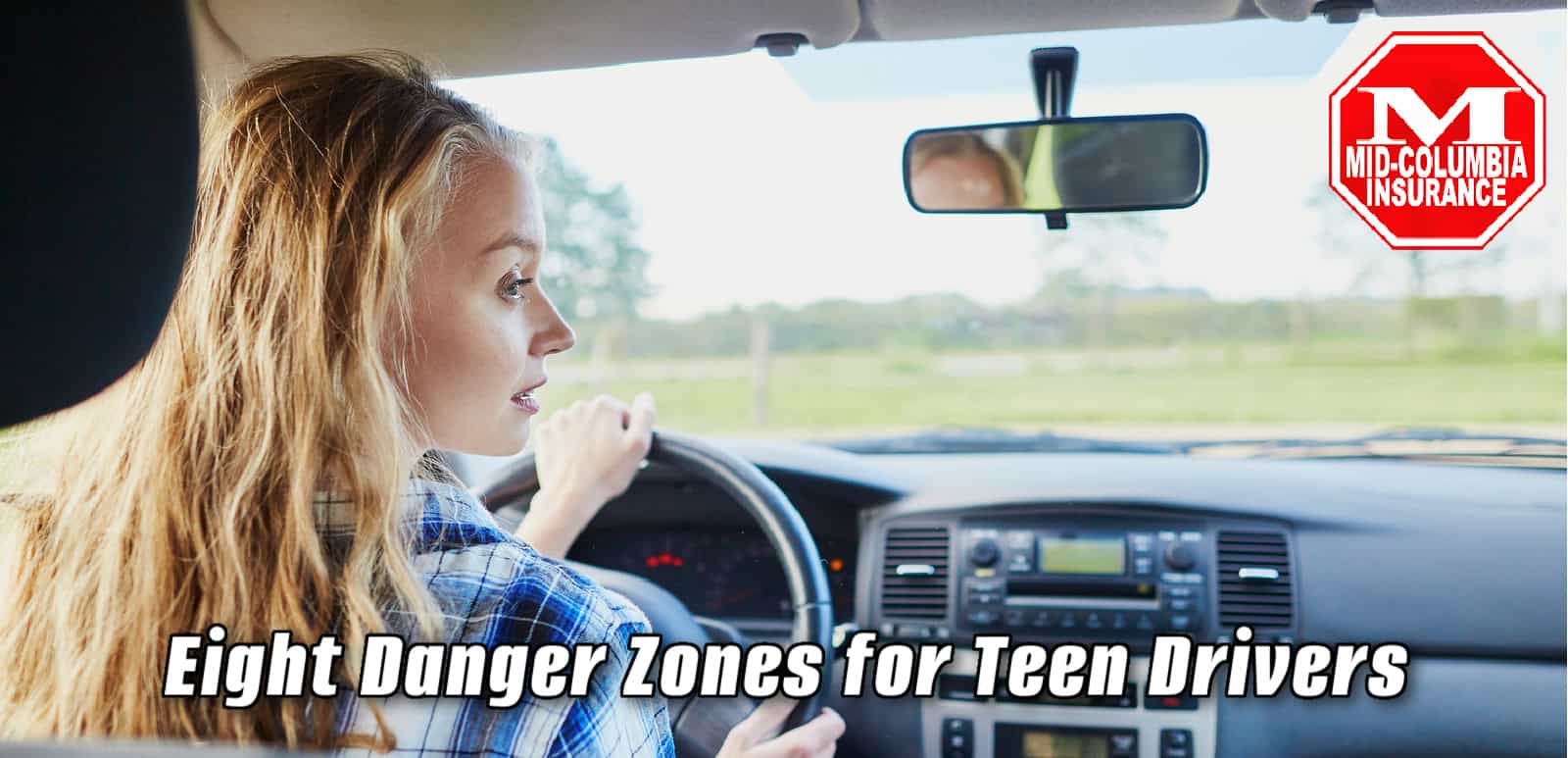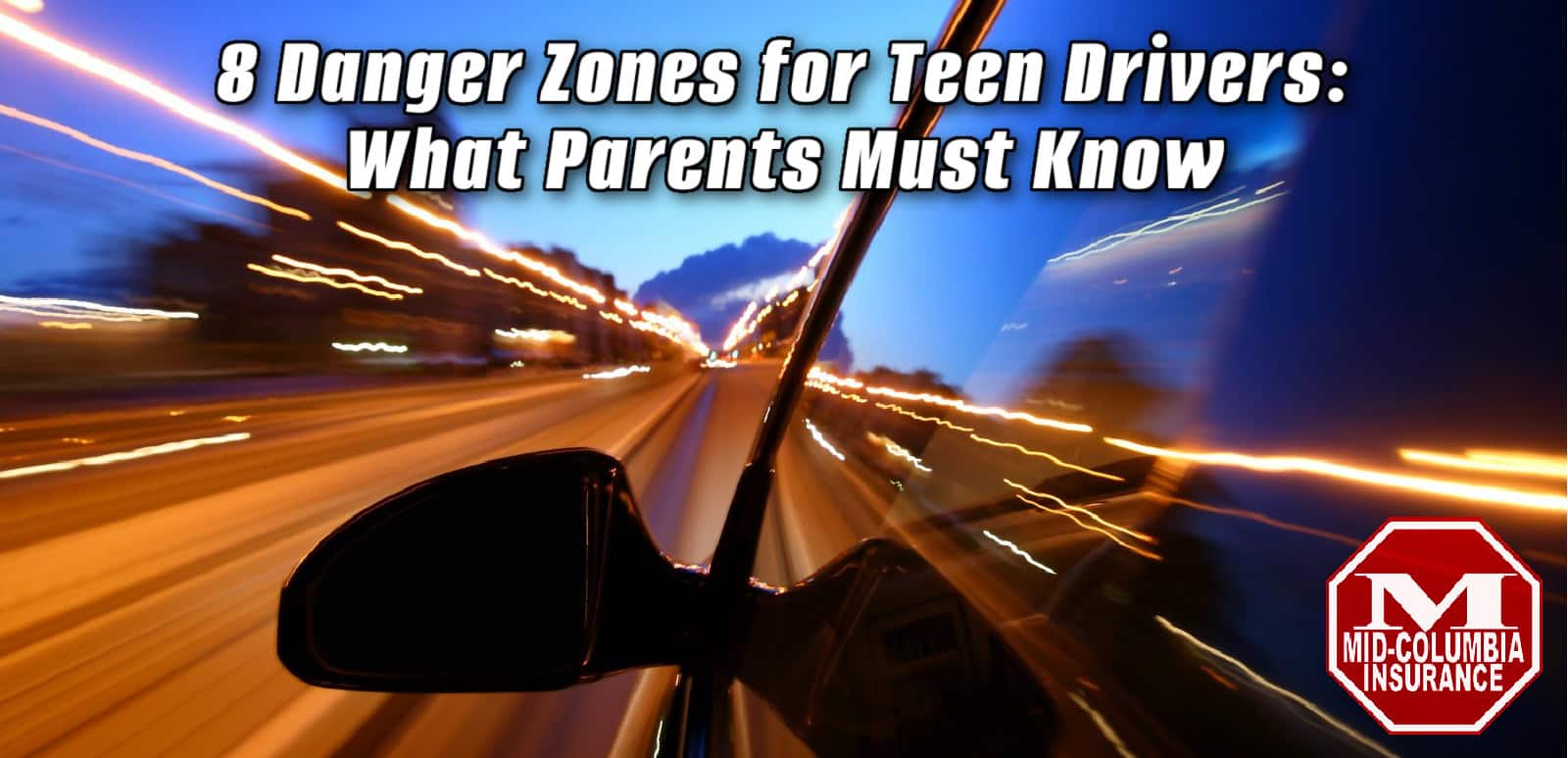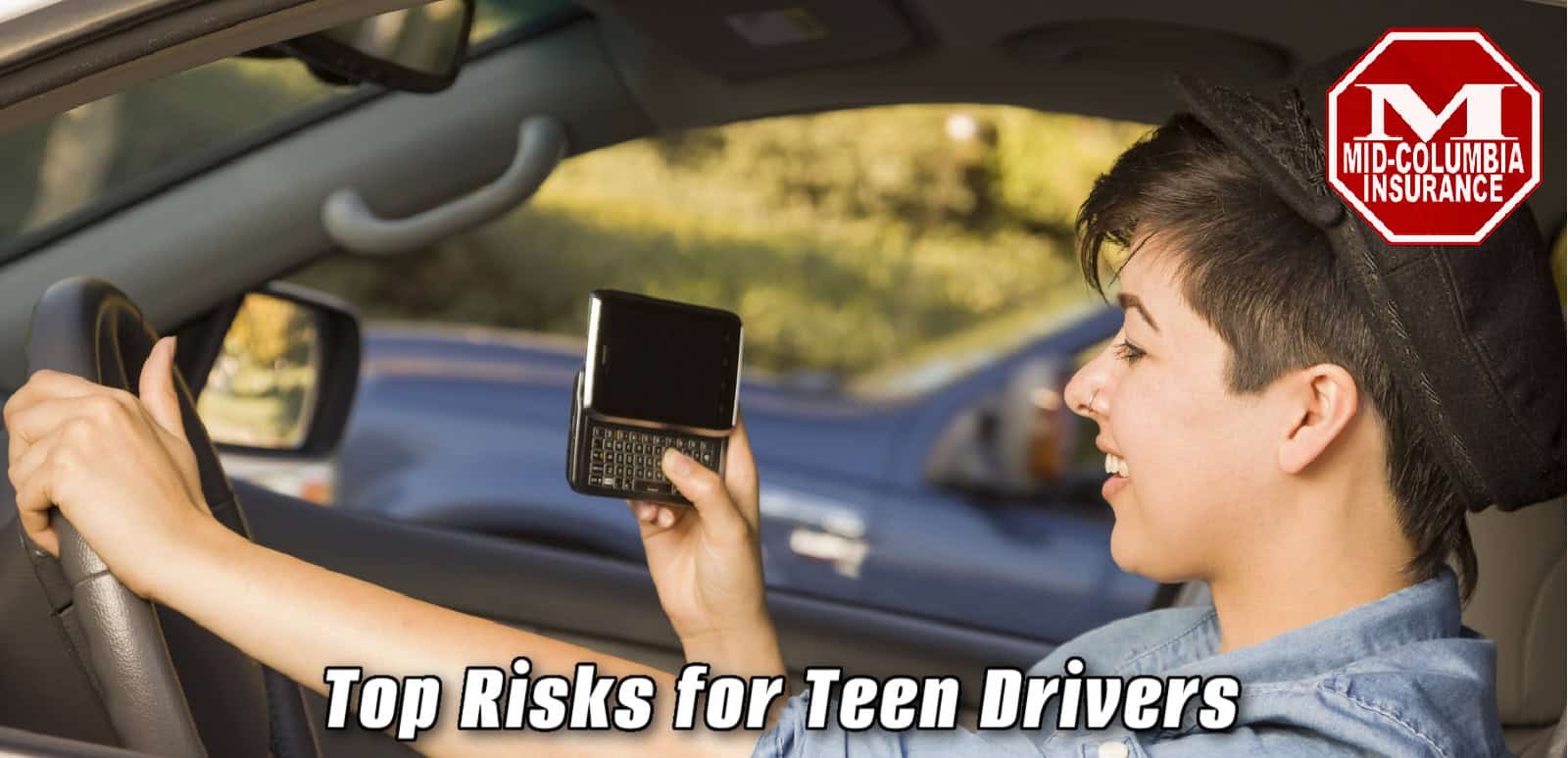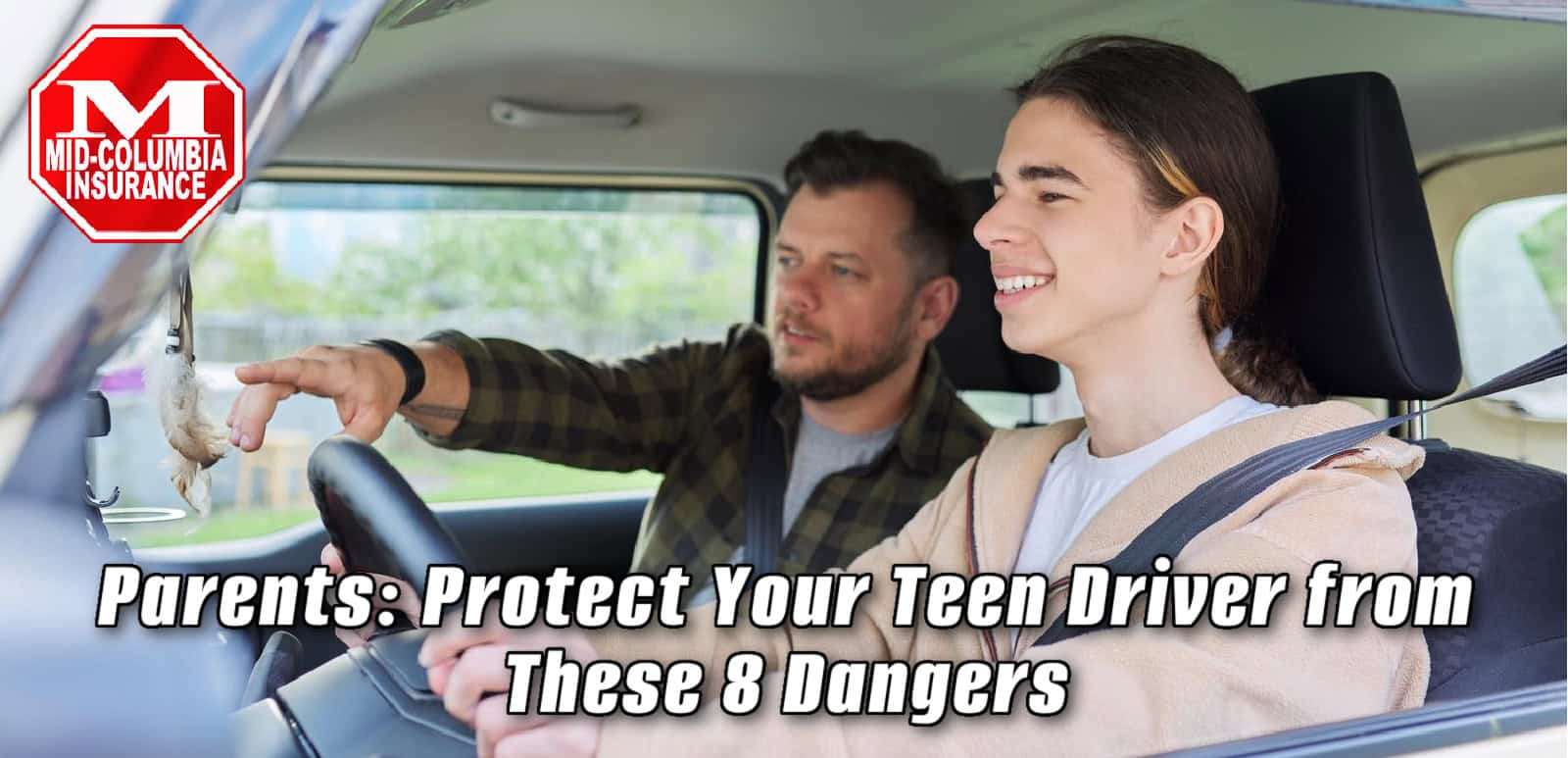
Motor vehicle crashes are the leading cause of death for teenagers in the United States due to a combination of inexperience, risky behaviors, and challenging driving conditions. As a parent, it’s critical to be aware of the eight key “danger zones” for teen drivers and to put rules in place to help keep your young driver safe on the roads.
Danger Zone #1: Driver Inexperience
“Most crashes happen during the first year a teen has a license.”
The number one danger facing teen drivers is a simple lack of experience behind the wheel. Driving is a complex skill that takes time and practice to master. Teen drivers are still developing their abilities to recognize hazards, make quick decisions, and handle challenging situations.
Studies show that the crash risk is highest during the first 12-24 months after a teen gets their license. Washington state has a graduated licensing system to help new drivers gain experience gradually. But it’s still essential for parents to provide plenty of supervised practice.
Experts recommend that teens get 30-50 hours of adult-supervised driving practice over a period of at least six months before driving independently. Practice sessions should include driving on a variety of roads, at different times of day, and in varied weather and traffic conditions. This extensive practice helps teens build the broad range of skills they need to stay safe.
Danger Zone #2: Driving with Teen Passengers
“Crash risk goes up when teens drive with other teens in the car.”
Another major risk factor is teen passengers. When a novice driver has other teenagers in the vehicle, it significantly increases the chances of a crash. Teen passengers can be distracting and may encourage risky behavior like speeding.
Washington’s graduated driver licensing law puts passenger limits on new teen drivers. For the first 6 months, no passengers under 20 are allowed except for immediate family members. For the next 6 months, no more than 3 passengers under 20 are permitted.
As a parent, consider setting even tighter rules, such as:
- No teen passengers at all for the first 6-12 months of independent driving
- Passenger limits that extend beyond the time required by law
- Requiring all passengers to wear seat belts
These types of house rules can help reduce some of the most dangerous situations for your teen driver. Be sure to enforce them consistently.

Danger Zone #3: Nighttime Driving
“For all ages, fatal crashes are more likely to occur at night; but the risk is higher for teens.”
Driving at night is more dangerous for everyone, but teens face extra risk. Nighttime crashes account for a significant proportion of young driver fatalities. There are several reasons for this increased danger:
- Reduced visibility – It’s harder to see hazards in the dark, especially for inexperienced drivers
- Fatigue – Teens may be driving at night while tired or drowsy
- More risky behaviors – Speeding, drunk driving, and not using seat belts are all more common at night
- Social influences – Teens driving at night may be coming from social events involving peers, dates, etc.
Washington restricts nighttime driving for newly licensed teens. For the first 12 months, they cannot drive between 1am and 5am unless accompanied by an adult.
Parents can further reduce risk by setting an earlier curfew, such as requiring your teen to be off the road between 9pm and 5am for at least the first 6 months of licensed driving. Make it a habit for your teen to get rides from experienced drivers for any essential nighttime trips.
Danger Zone #4: Not Using Seat Belts
“The simplest way to prevent car crash deaths is to buckle up.”
One of the easiest and most effective safety steps is also the most neglected by teens: buckling their seat belts. Teens have lower seat belt use rates than any other age group. In a crash, wearing a seat belt reduces the risk of death or serious injury by about 50%.
As a parent, insist that your teen driver and their passengers buckle up on every trip, every time. Let your teen know you’ll check seat belt use periodically. And always model safe behavior by wearing your own seat belt.
Washington state has a primary enforcement seat belt law, meaning a driver can be pulled over and ticketed just for not wearing a seat belt. The fine is $124. But more importantly, using a seat belt is a life-saving choice.

Danger Zone #5: Distracted Driving
“Distractions increase your teen’s risk of being in a crash.”
Distracted driving is an ever-increasing threat on the roads, and teens are especially susceptible. Talking or texting on a cell phone is the most common distraction, but anything that takes a driver’s attention away from the road is dangerous, such as:
- Eating or drinking
- Adjusting vehicle controls
- Grooming
- Reaching for objects
- Reading
- Focusing on GPS or maps
- Talking to passengers
- Listening to loud music
Washington state law prohibits all drivers from using a hand-held cell phone while driving, even when stopped in traffic. It’s a primary offense, meaning teens can be pulled over and ticketed for it. The fine is $136 for the first offense.
To reduce distractions, have your teen turn off their phone and put it away when driving. Ask them to pull over to deal with any important calls or messages. Program any necessary navigation before driving. And keep music and conversation at reasonable levels. Stay focused on the task of driving at all times.
Danger Zone #6: Drowsy Driving
“Young drivers are at high risk for drowsy driving, which causes thousands of crashes every year.”
Drowsy driving is frequently overlooked as a major danger, especially for teens. Adolescents need more sleep and often get less than they need. Their sleep patterns also tend to be irregular. Add to this the fact that teens often drive late at night and early in the morning, and drowsy driving becomes a serious threat.
Research shows that going without sleep for 18 hours causes impairment equal to a blood alcohol level of .05%. At 24 hours without sleep, impairment is equal to .10% BAC – above the legal limit for adults. Drowsy driving causes thousands of crashes and hundreds of deaths each year.
Parents should ensure their teen drivers are getting enough sleep on a regular schedule. Teens need about 8-10 hours of sleep per night. Limit driving late at night or early in the morning before your teen is fully rested. Watch for signs of drowsiness and make your teen pull over if they are too tired to drive safely.

Danger Zone #7: Reckless Driving
“Research shows that teens lack the experience, judgment, and maturity to assess risky situations.”
Reckless driving – also known as aggressive driving – covers a range of unsafe behaviors that are common among teens. Teens tend to underestimate the dangers of these behaviors and overestimate their own driving skills. Examples include:
- Speeding – exceeding posted limits or driving too fast for conditions
- Tailgating – following too closely behind other vehicles
- Weaving – cutting in and out of lanes
- Running red lights or stop signs – trying to “beat the light”
- Not yielding right of way
- Illegal passing
- Road rage – acting in anger toward other drivers
These types of careless and risky maneuvers are involved in a high proportion of teen crashes and fatalities. In Washington, speeding alone plays a role in over 25% of teen driver-involved fatal crashes.
Talk to your teen about the specific dangers of reckless driving. Make it clear that your family’s rules prohibit all these unsafe behaviors. Use safe driving behavior contracts to spell out the expectations and consequences. Ensure your teen knows to always:
- Follow posted speed limits
- Adjust speed as needed for road conditions like rain, snow, ice, curves, etc.
- Maintain a 3-4 second following distance behind other vehicles
- Stop completely at red lights and stop signs
- Yield to pedestrians and other vehicles that have the right-of-way
- Pass only when it’s safe and legal to do so
- Stay calm and courteous toward other drivers
Danger Zone #8: Impaired Driving
“Even one drink will impair your teen’s driving ability and increase their risk of a crash.”
Impaired driving is involved in about a quarter of fatal crashes among 15-20 year old drivers nationwide. In Washington, about 33% of young drivers involved in fatal crashes in recent years had a BAC of .01 or higher.
Alcohol and drugs – including some prescription and over-the-counter medicines – affect a person’s alertness, concentration, coordination, reaction time, and decision-making abilities. These effects can start with the first sip of alcohol or the first puff or pill. For teens, who are already at greater risk while driving, any degree of impairment is extremely dangerous.
Washington has a zero tolerance law for drivers under 21. Any level of alcohol is illegal, and penalties are strict. On the first offense, a teen can have their license suspended for 90 days. Penalties increase steeply from there, including fines, license revocation, and even jail time.
Parents need to set a clear no-use expectation for their teen drivers and keep lines of communication open. Make a plan together for ways your teen can get home safely if they do end up drinking or using drugs – such as calling you for a ride with no questions asked. And remember, your own driving habits are a powerful influence. Model safe behavior by never driving impaired yourself.

Keeping Teen Drivers Safe: A Parental Responsibility
Washington state has taken important steps to protect teen drivers by enacting graduated driver licensing laws and other legal limits. But research shows that parents play an even bigger role in teen driver safety.
By knowing the key danger zones, setting appropriate rules, and enforcing them consistently, you can help your teen beat the odds. Actively supervising your teen’s driving, especially during their first year on the road, is one of the most effective ways to reduce crash risk.
Use tools like parent-teen driving agreements to make your expectations clear and hold your teen accountable. Follow through on the consequences if rules are broken – whether that’s suspending driving privileges for a time or something else.
At the same time, keep communicating openly with your teen about their driving experiences, concerns, and questions. Reinforce the idea that driving is a big responsibility. With your support and their safe choices, your teen can become a capable, responsible driver for life.
Mid-Columbia Insurance
– Your Trusted Insurance Agent
Call (509)783-5600 and speak to one of our independent insurance agent professionals today, or click “Get a Quote” to request an insurance quote.
The insurance you want — At a price you can afford.
Source: Eight Danger Zones for Teens Behind the Wheel by CDC.gov
